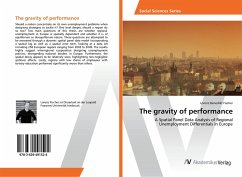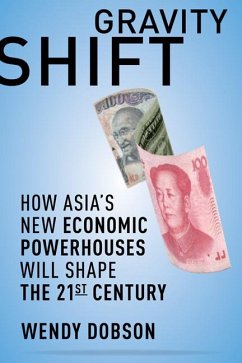
The gravity of performance
A Spatial Panel Data Analysis of Regional Unemployment Differentials in Europe
Versandkostenfrei!
Versandfertig in 6-10 Tagen
31,95 €
inkl. MwSt.

PAYBACK Punkte
0 °P sammeln!
Should a nation concentrate on its own unemployment problems when designing strategies to tackle it? One level deeper, should a region do so too? Two main questions of this thesis are whether regional unemployment in Europe is spatially dependent and whether it is of equilibrium or disequilibrium nature. These questions are attempted to be answered through a dynamic spatial panel data model incorporating a spatial lag as well as a spatial error term, looking at a data set including 258 European regions ranging from 2003 to 2009. The results highly suggest interregional cooperation designing un...
Should a nation concentrate on its own unemployment problems when designing strategies to tackle it? One level deeper, should a region do so too? Two main questions of this thesis are whether regional unemployment in Europe is spatially dependent and whether it is of equilibrium or disequilibrium nature. These questions are attempted to be answered through a dynamic spatial panel data model incorporating a spatial lag as well as a spatial error term, looking at a data set including 258 European regions ranging from 2003 to 2009. The results highly suggest interregional cooperation designing unemployment policies, disregarding national borders in Europe. Furthermore, the spatial decay appears to be relatively slow, highlighting non-negligible spillover effects. Lastly, regions with low shares of employees with tertiary education performed significantly worse than others.












